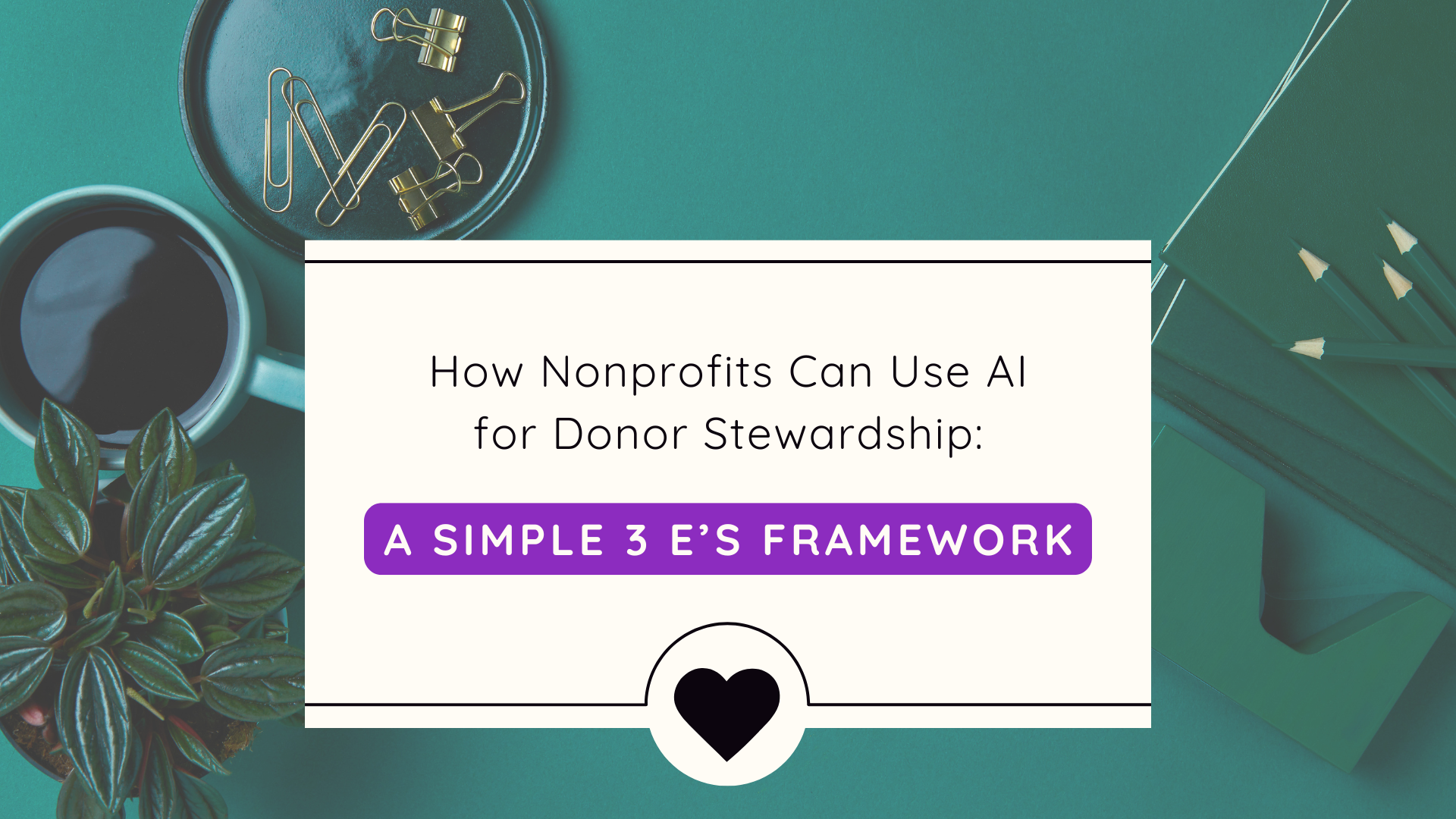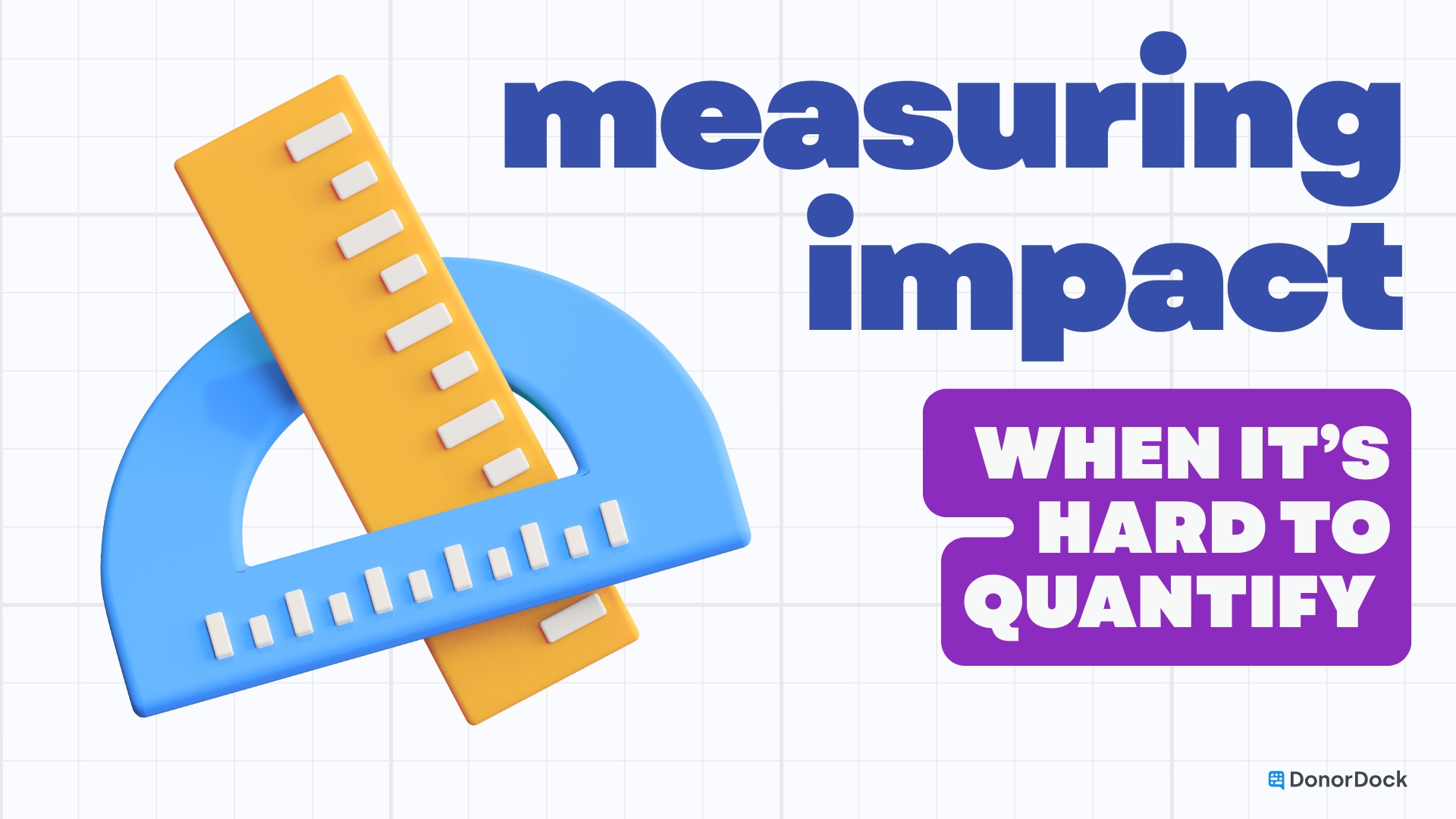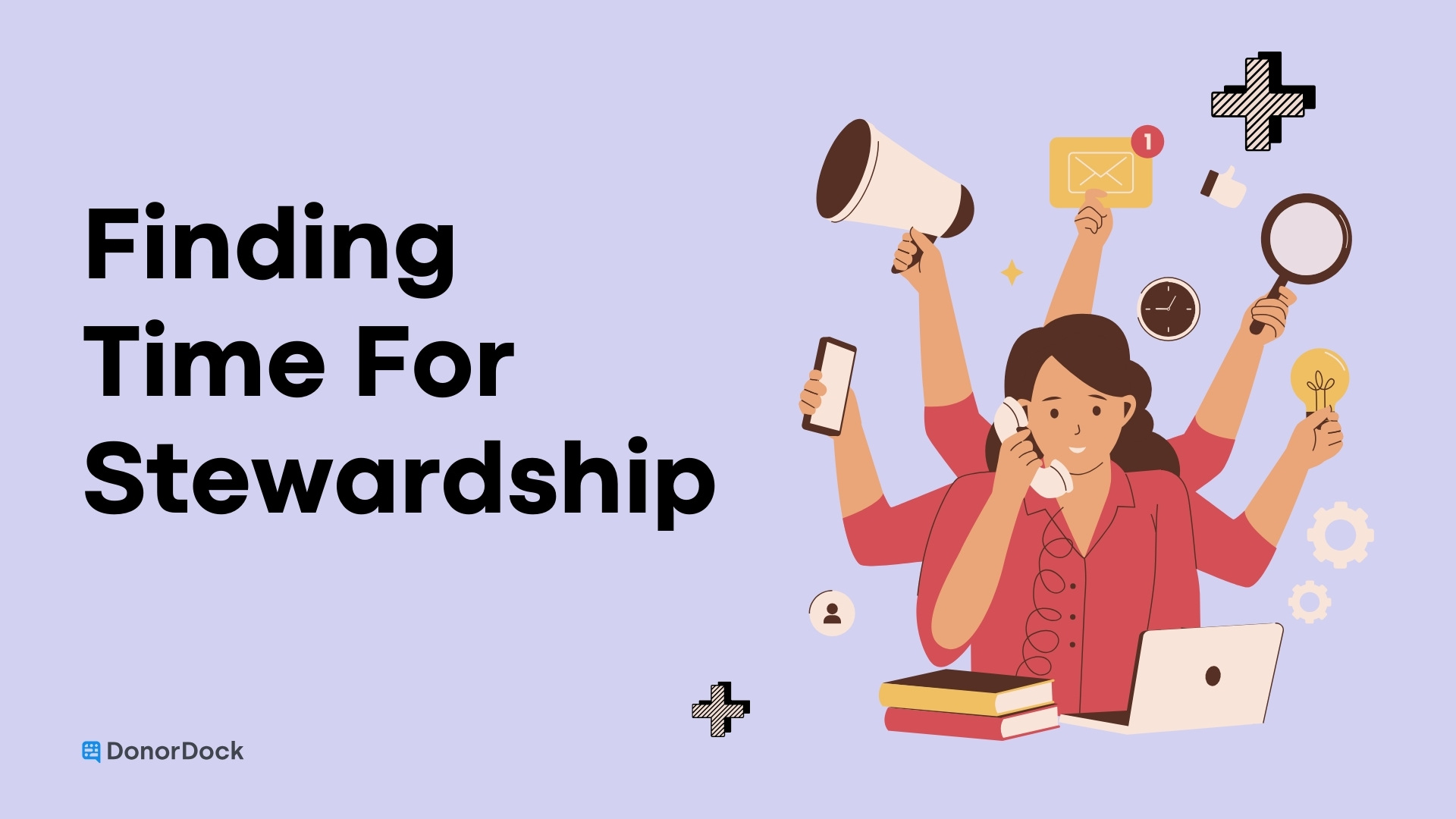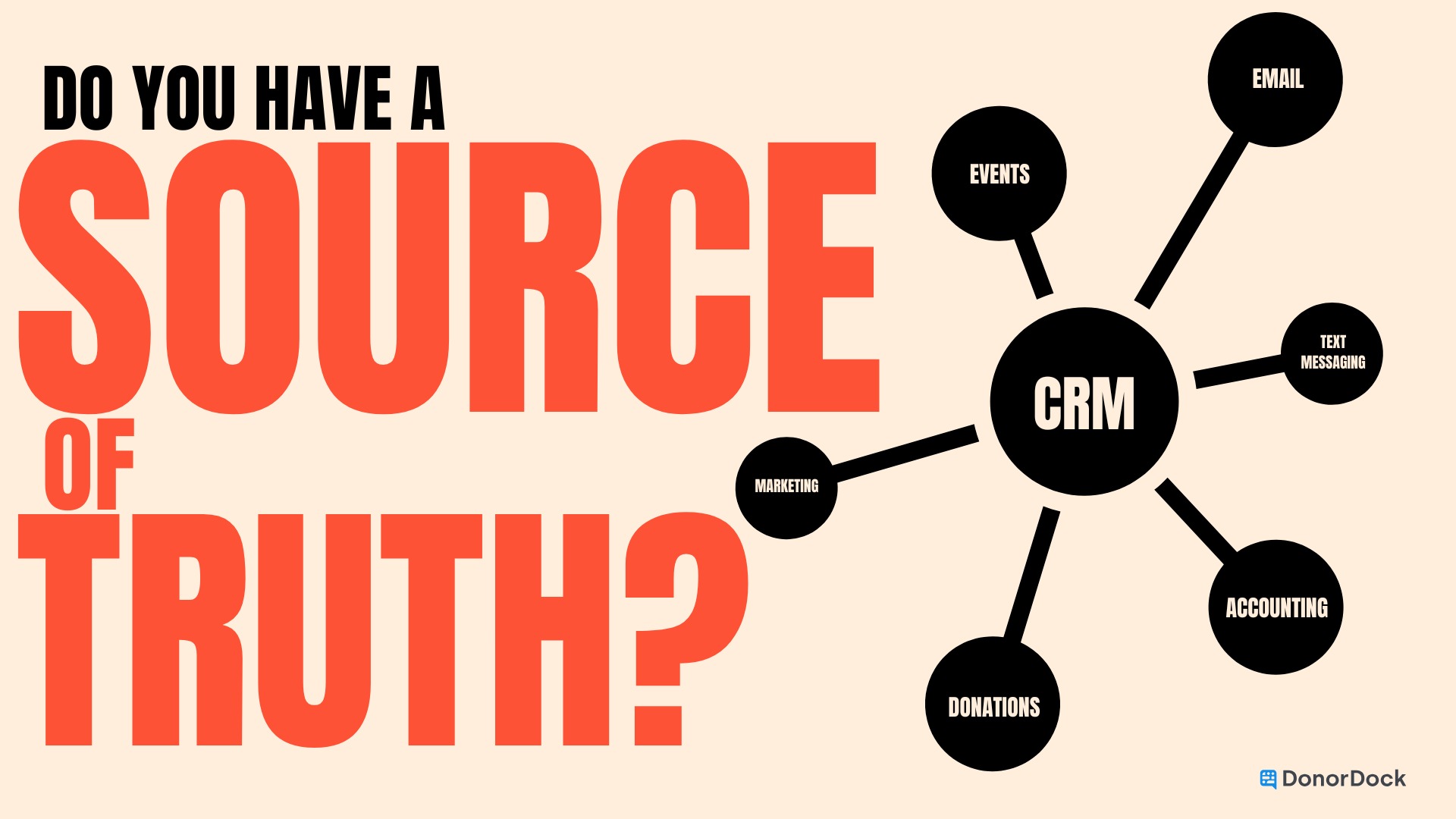Feel like you’re in a non-stop race to juggle tasks, meetings, events, and doing your mission? Nonprofit organizations are increasingly turning to automation to streamline their fundraising efforts. While automation offers many benefits, maintaining strong human relationships with donors remains crucial. Balancing these two aspects is key to successful nonprofit fundraising.
The importance of human connections
Developing personal relationships with your donors is an essential part of building your donor base. These connections let donors know that they are more than just an ATM to your nonprofit, offering opportunities to show genuine appreciation.
“Without human relationships at the core, automation does not help to scale fundraising.” - Matt Bitzegaio
Real human connection helps to:
- Build Trust
When donors know the people running your organization, they feel a stronger connection to your cause. Authentic relationships foster trust, which is crucial in an era where skepticism about nonprofits is growing. A donor who trusts your organization is more likely to remain engaged and increase their support over time. - Encourage Long-Term Engagement
Human connection turns one-time donors into lifelong supporters. Personal interactions, whether through phone calls, handwritten notes, or face-to-face meetings, make donors feel valued and involved. When donors feel like they are part of your community, they are more likely to stay engaged for the long term. - Create Loyalty
Donors who feel connected to your cause and the people behind it are more likely to stick with you during tough times. A loyal donor will advocate for your organization, donate consistently, and even increase their giving as they see the impact of their involvement. Loyalty isn't just about financial support; it's about creating ambassadors for your cause.
With all of the benefits of building personal connections, it’s easy to wonder, “Why not just focus on deepening relationships with donors rather than implementing automation tools?”
How Dunbar’s number impacts fundraising
Dunbar's number offers an insightful lens for nonprofit fundraising, particularly when managing donor relationships. The idea is that individuals can only maintain around 150 meaningful connections. This can feel limiting for nonprofits that rely on a broad donor base.
According to Dunbar’s number: humans can only handle 150 relationships!

While it’s important to go deep with core donors, how do you continue to foster connection with your wider donor base? This is where leveraging technology and automation comes in!
Automation allows you to manage and personalize interactions with a larger pool of donors, ensuring that even those outside the core group feel valued and connected. Ultimately, by acknowledging the limitations suggested by Dunbar's number, nonprofits can create more effective and sustainable fundraising strategies that emphasize quality over quantity in donor relationships.
The role of automation in nonprofit fundraising
So, because it’s impossible to build deep connections at scale, how do you meaningfully grow your donor database?

Imagine combining the warmth of human interaction with the efficiency of automation in fundraising. This equation: Humanᵃᵘᵗᵒᵐᵃᵗⁱᵒⁿ = Connection at scale - captures that powerful synergy.
Human: At the heart of fundraising is the human touch. It's about building genuine relationships, understanding donor motivations, and creating emotional connections that inspire giving.
Automation: Automation exponentially amplifies these human efforts. By using technology to handle repetitive tasks, personalize communications, and analyze donor data, nonprofits can reach more people without losing the personal touch.
Connection at Scale: When you raise human efforts to the power of automation, you achieve connection at scale. This means being able to engage a larger audience with personalized, meaningful interactions, fostering a sense of community and belonging among donors.
Automation takes the human element and exponentially increases your connection!
In essence, this equation highlights how nonprofits can expand their reach and deepen donor relationships by blending human empathy with the strategic use of technology.
The right balance between automation and human connection
Striking the right balance between automation and human relationships is key. Nonprofits should use automation to handle routine tasks—like sending thank-you emails, setting up recurring donations, or scheduling social media posts—while reserving personal engagement for deeper, more meaningful interactions.
For example, automated emails are great for sharing general updates and newsletters, but personalized messages, phone calls, or handwritten notes should be directed to major donors or those with a long history of support. This approach ensures that while technology handles the background work, your team can focus on cultivating strong, human connections.
Best Practices for Automating Fundraising
- Segment your audience
Use automation to divide your donor base into specific groups based on giving history, interests, or engagement levels. Segmentation allows you to tailor your messages to each donor, ensuring they receive content that resonates with them personally. - Automate routine communications
Automated workflows for things like donation receipts, event reminders, and follow-up emails can save time and ensure timely communication. Just be sure to regularly review and update these workflows to keep them fresh and relevant. - Personalization at scale
Even automated communications can be personalized. Use your donor data to include names, past giving information, and personalized thank-yous in your automated emails. This small touch can make a big difference in how donors perceive your organization. - Monitor and adjust
Automation isn't set-it-and-forget-it. Regularly review your automated processes to ensure they’re still effective and aligned with your nonprofit’s mission. Make adjustments as necessary to keep your communications engaging and meaningful.
If you’re not sure where to start, here is a checklist of automations you can do now.
By thoughtfully integrating automation into your fundraising efforts, you can scale your operations while maintaining the personal connections that keep your donors engaged and committed to your cause.
Challenges in balancing automation and human relationships
While automation offers many benefits, you must be careful not to over-rely on it. Over-automation leads to impersonal interactions, potentially alienating donors who feel more like numbers than valued supporters. Remember, no amount of automation can fully replace the warmth and authenticity of human connection.
Remember, no amount of automation can fully replace the warmth and authenticity of human connection.
Key challenges in balancing automation and personal relationships:
- Keeping communication relevant
Without careful oversight, automation can lead to repetitive or generic messaging, which risks losing the attention of donors. Keep the tone and content of automated messages personal and aligned with the organization’s mission. - Maintaining flexibility
Regularly review your analytics and gather feedback from donors to understand their experiences and preferences. Your data will reveal areas where automation might be falling short or where personal engagement could be strengthened. By staying in tune with donor expectations, you can fine-tune your approach to ensure a positive and impactful experience for their supporters. - Maintaining touchpoints with key segments
Be mindful of how automation affects different donor segments. High-touch donors, such as major donors, may expect more personalized interactions and could feel undervalued if they receive too many automated messages. Striking the right balance between automation and personal outreach requires understanding your donors' needs and tailoring your strategies accordingly.
In essence, nonprofits should treat automation as a tool to support human connection, not replace it. Thoughtful use of technology can amplify your reach, but genuine relationships will always be the foundation of successful fundraising.
Use a CRM to maintain your donor data and implement automation
As your nonprofit grows, managing donor data and automating key processes becomes essential to sustaining effective fundraising efforts. This is where a Customer Relationship Management (CRM) system comes in. A CRM not only helps you organize and analyze your donor data, but it also makes it easier to implement automation strategies that personalize outreach, track donor engagement, and streamline communication.
Wondering if your nonprofit is using automation well and what your next steps should be? Take the automation assessment to see where you are at and get simple steps for growth.
Designed with nonprofits in mind, DonorDock offers a user-friendly platform that integrates donor management and automation, so you can scale your fundraising!
- Donor Management
DonorDock makes it simple to track and manage your donor relationships. From storing donor information to tracking communication history and giving patterns, you’ll have everything you need to build and nurture meaningful connections with your supporters. - Automation Features
With DonorDock, you can automate key fundraising tasks like sending personalized thank-you emails, segmenting your donor base, and creating workflow automations based around those segments. This allows you to engage a larger audience while ensuring that each interaction feels personal and thoughtful. - Integration and Scalability
As your nonprofit grows, DonorDock scales with you. The platform integrates seamlessly with your favorite tools, helping you streamline your operations and expand your fundraising efforts.
Using a CRM like DonorDock allows nonprofits to not only stay organized but also leverage technology to enhance donor relationships. By combining data management with automation, you can engage donors more effectively, ultimately leading to stronger, more impactful fundraising efforts.
{{start-for-free-cta="/components"}}
Conclusion
Balancing automation and human relationships in nonprofit fundraising is essential for long-term success. By leveraging the strengths of both approaches, nonprofits can create efficient yet personal fundraising campaigns. The key is to use automation as a tool to enhance, not replace, the human connection that is at the heart of successful fundraising.
In today's digital world, nonprofits need to balance using automation with maintaining the human connections that make fundraising successful. Automation brings efficiency and allows you to reach a wider audience, but it's the genuine relationships with donors that have a lasting impact.
The key is to find the right balance. Use automation for routine tasks, but keep personal interactions for building deeper connections. This way, nonprofits can grow without losing the personal touch that builds trust and loyalty.
As you advance in your fundraising efforts, remember that technology should enhance your ability to connect with donors on a larger scale. However, no amount of automation can replace the warmth and authenticity of real human interactions. By combining both approaches, your nonprofit can create a fundraising strategy that not only achieves results but also strengthens the relationships that support your mission.












